Beat the heat or embrace the cold with my collection of cool ice cube experiments. From exciting colour changes to gravity defying tricks and icy engineering challenges, get ready for some surprisingly simple, hands-on science that's sure to make your summer cooler.
You only need ice and salt for most of these investigations, making them fun and inexpensive!
Science Experiments Using Ice Cubes
Lift ice with string
Find out how to lift ice cubes with string ( and a little salt ). This is a brilliantly visual science trick that always looks impressive.
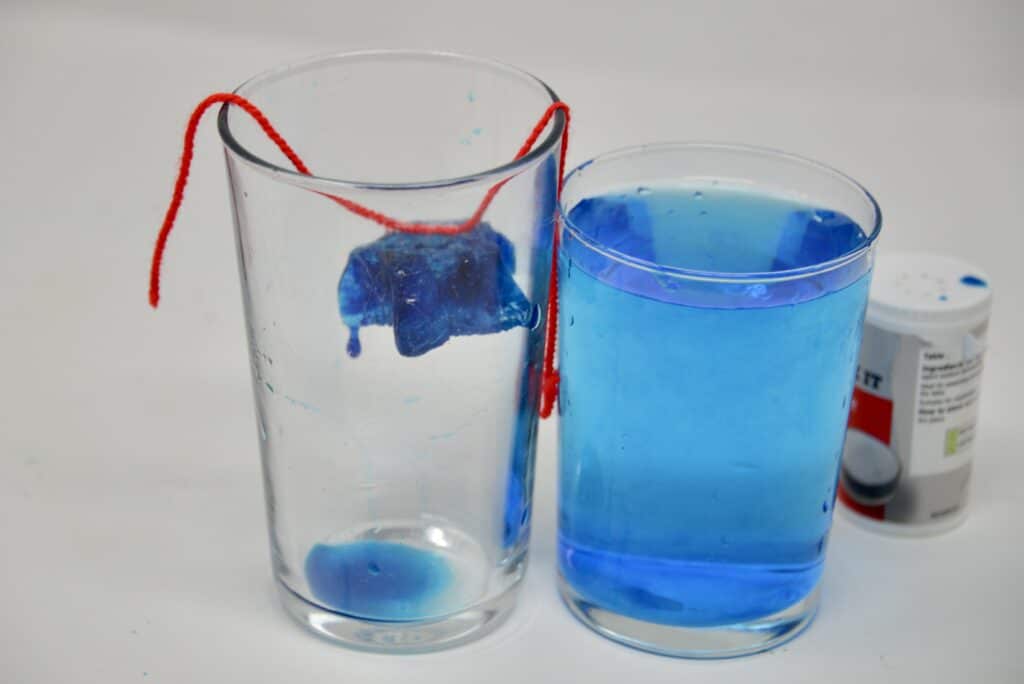
Make ice cream with ice cubes
Use ice cubes and salt to make ice cream from milk! This tasty science experiment uses salt to lower the freezing point of water, drawing heat from the surroundings ( the milk ) to do it.
When salt is added to the ice in the outer bag, the ice starts to melt. Melting needs energy, which in this case comes from the milk mixture in the inner bag. Heat energy is absorbed from the milk, causing ice crystals to form, which then turn the milk into ice cream.
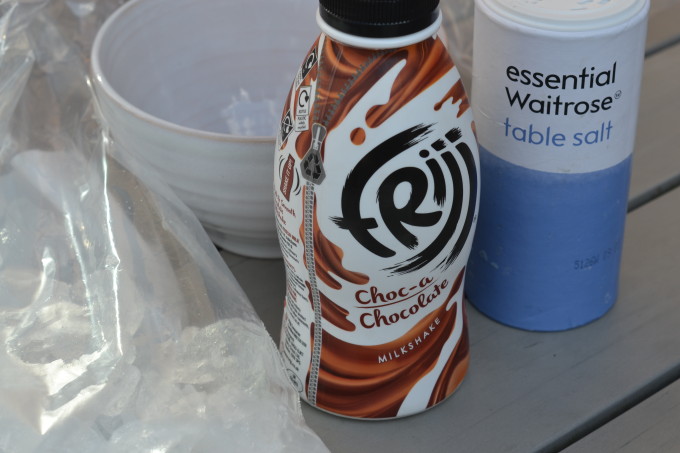
Ice Decorations
Ice decorations are fun to make in winter or summer. Children can hang these from trees or around a garden and observe how long it takes for them to melt. We like to use shaped ice cube trays and add small petals and flowers to decorate them.
Ice Excavations
Set up an ice excavation. Ice excavations can be made to any theme, and allow children to experiment with warm water, cold water and salt to try to melt the ice.
If the weather is very cold, you can leave water in a tray out overnight to see if it freezes!
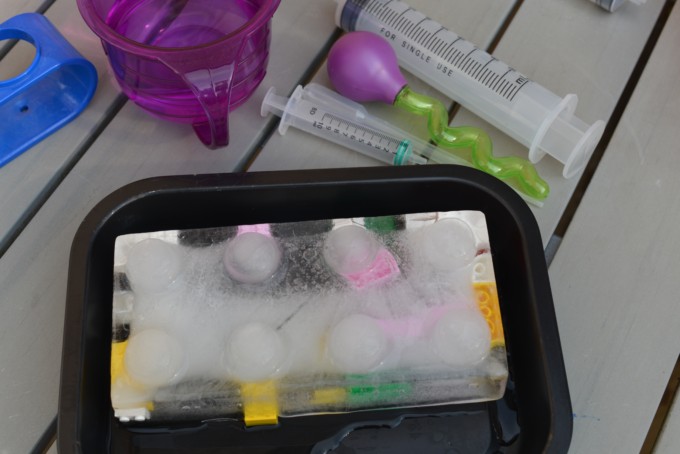
Create Frost on a Can
Use ice cubes to make frost appear on the outside of a tin can. This activity visually demonstrates to children how adding salt to an ice and water mixture lowers the temperature of the water.
Find out if ice melts faster in salt water or freshwater
Pop an ice cube in salty water and an ice cube in freshwater to see which melts the fastest.
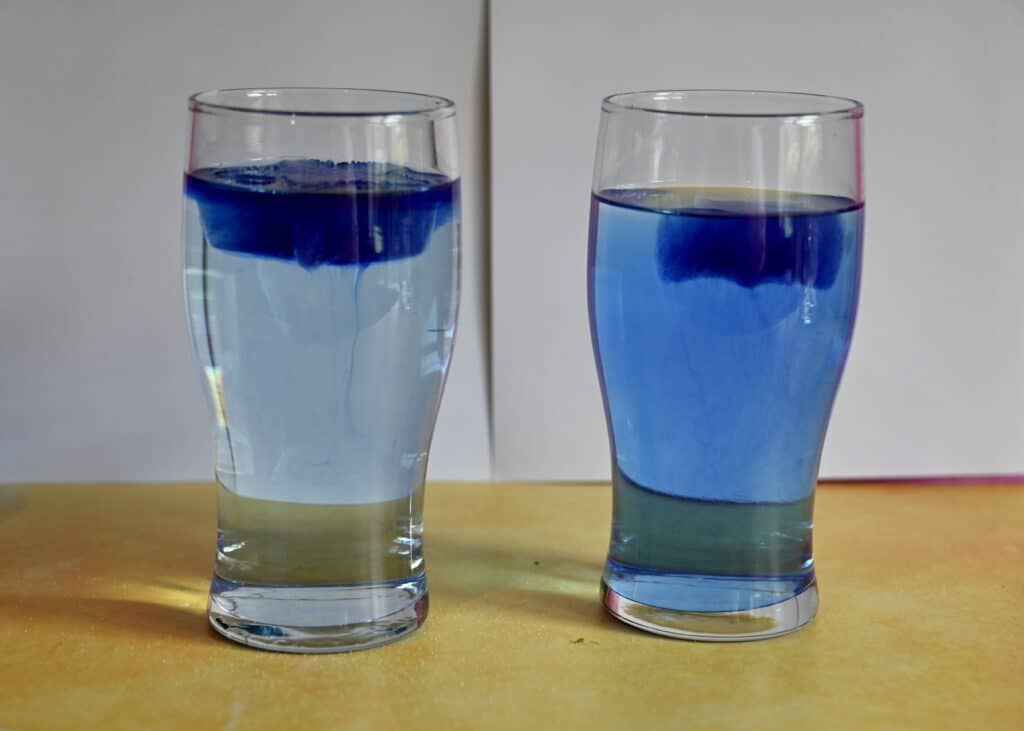
Ice Cube Towers
Building a tower from slippery ice cubes might sound impossible, but if you leave the ice cubes to melt a little and add a sprinkle of salt to each one. Salt makes the water melt, then refreeze, sticking the ice cubes together!
From simple melting ice to impressive towers, these ice cube experiments prove that you don't need fancy equipment for exciting science experiments!
Keep kids engaged and cool while learning about fundamental scientific principles, all from the comfort of the garden!
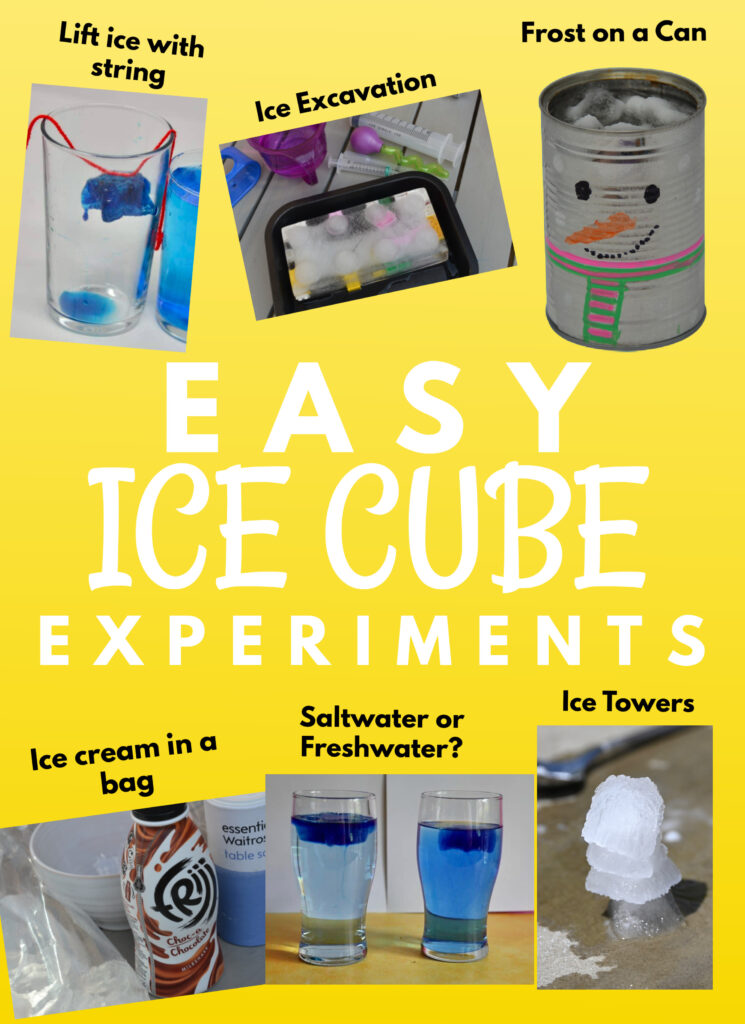
Last Updated on July 3, 2025 by Emma Vanstone
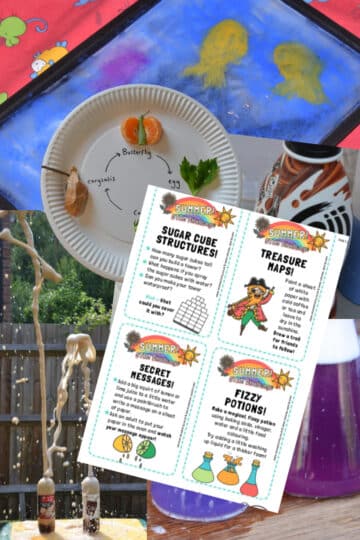
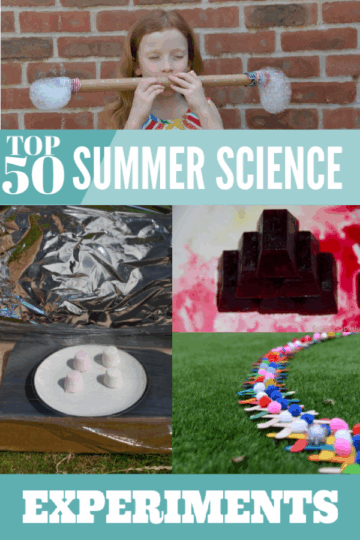
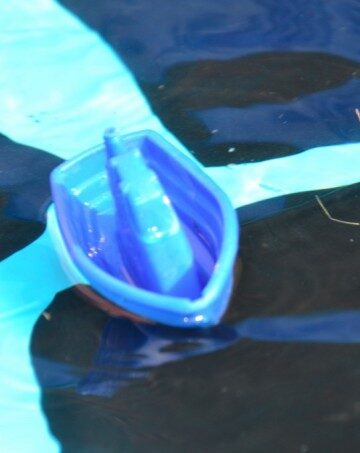
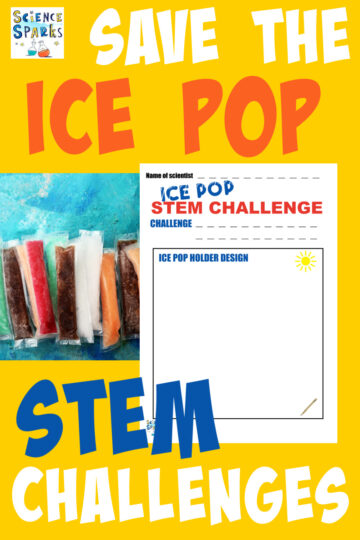
Leave a Reply